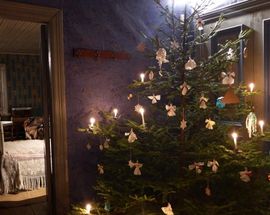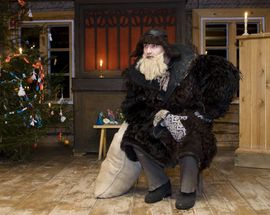Though they feel like they’re as much a part of the December scenery as the long nights and the snow, in fact Christmas trees, Santa Claus and the other staples of the season that are taken for granted in Western Europe came to Estonia relatively late in its history. With their roots in pagan custom, Estonia’s holiday traditions have their own, unique character.
In the days of old, the Christmas season began on St. Thomas’ Day (Dec. 21) when the frenzy of cleaning, cooking, and brewing for the big holiday would begin. On this day, ‘Sooty Thomas,’ a large, dirty scarecrow, would be passed from house to house, damning the household whose doorstep he darkened at sunset to a year of grime.
Christmas Eve (Dec. 24), traditionally and today, is the highpoint of the holiday season. On this day clean straw was brought into the house and placed on the floor or the table, symbolising fertility. To bring good luck and plenty for the coming year the family would eat nine times, leaving the food on the table all night so that the souls of the ancestors could partake as well. It was believed that ghosts moved about freely on Christmas Eve, and would often be called upon for help in fortune telling. Today children have adopted the custom of pouring molten tin or lead into cold water and interpreting the shapes that it forms. In contrast to Christmas Eve, when the presents are opened and the big meal is eaten, Christmas Day is a more sombre occasion, meant for church-going, visiting relatives and eating left over pork with sauerkraut.
Santa Claus (Jõuluvana in Estonian) is nowadays very much part of the holiday activity, but here he requires children to recite a Christmas poem or song before giving them their presents. Most family and even office parties can also involve a similar command performance, so it wouldn’t hurt to memorise something for the occasion.
If you want to experience the traditional Estonian Christmas first-hand, head to the Estonian Open Air Museum that holds an annual Christmas Village event.







Comments